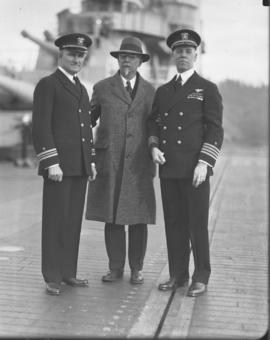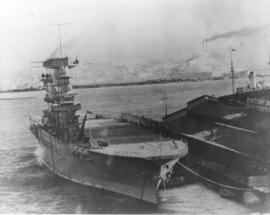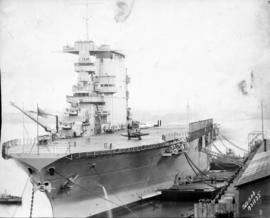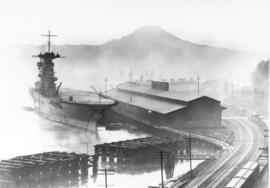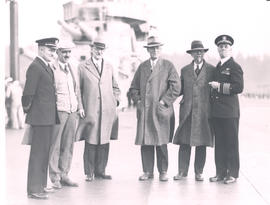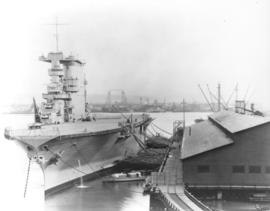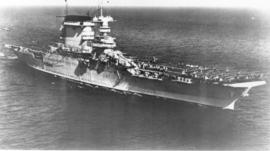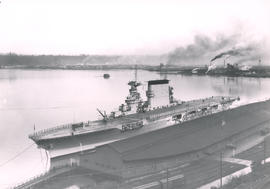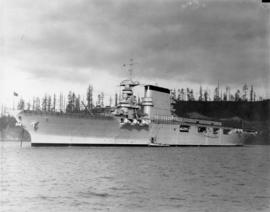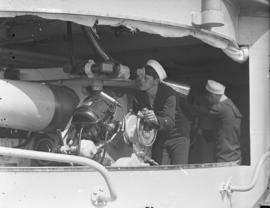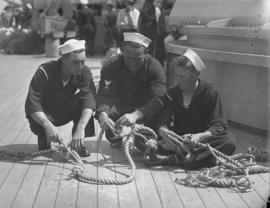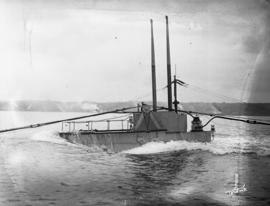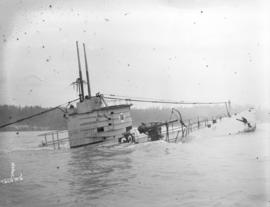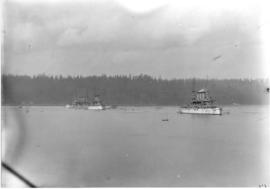On board the U.S.S. Lexington, aircraft carrier known as the "Queen of the Flattops,"in mid-December, 1929, were those instrumental in bringing emergency power to Tacoma. L-R, Chief Engineer Lt. Cdr. H.L. White, General Electric (maker and owner of the generators) representative Robert E. Lee, Utilities Commissioner Ira S. Davisson, City Light Supt. Llewellyn Evans, Tacoma Mayor James G. Newbegin (appointed in March of 1929 to replace the resigning Melvin G. Tennent), and ship commander, Frank D. Berrien. Tacoma experienced a severe shortage of electricity due to drought conditions; the Lexington, with its enormous generators, would deliver over 4 million kilowatts or about 25% of the city's power. TPL-1775. ALBUM 16.
U.S.S. Lexington (United States Navy); Aircraft carriers--United States; White, H.L.; Lee, Robert E.; Davisson, Ira; Evans, Llewellyn; Newbegin, James G.; Berrien, Frank D.; Power shortages--Tacoma; Mayors--Tacoma--1920-1930;
